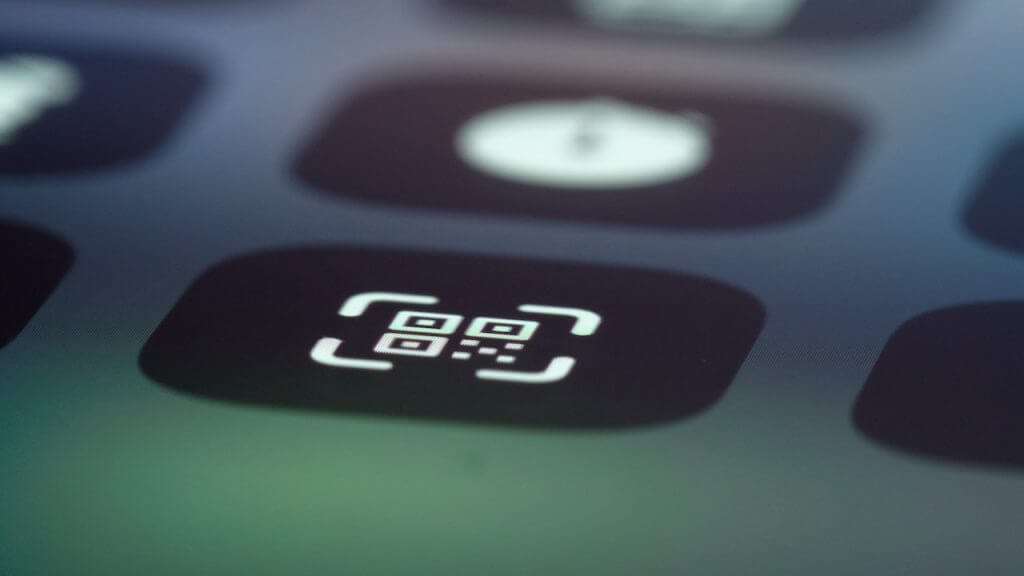It’s always an awkward situation when you, as the business owner, have to remind customers how to pay for your products or services. Even more so when they said they did, but the transaction couldn’t be completed. In this digital economy, with e-wallets and wireless payments, all of these discrepancies could have been avoided by using quick response codes.
It’s not exactly a new invention since the first QR code came about in 1994. But with the pandemic, its popularity has increased again. The numbers show that the QR code labels market size is expected to reach US$1268.1 million by 2026.
A quick response (QR) code is a square-shaped grid with a barcode that users can scan with a digital device. This two-dimensional code stores information as a series of pixels. This code can be printed on a poster or presented on a monitor or TV screen. You can use this nifty QR code to provide more information about your products allowing customers to engage with your company, and of course for e-payments.
You might also have come across QR codes in marketing and advertising campaigns. They are usually present in an advertisement poster or product packaging that directs you to scan the barcode to get more information.
The difference between Static and Dynamic QR code
Static codes cannot be changed when you’ve created them. If the link changes, you have to change the code. You will usually see static codes at hawker centres or retail stores. Customers need to scan the QR code, which directs them to a site for price input. After that, they will show merchants that they have paid via the phone screenshot.
However, a dynamic QR code offers flexibility. The short web link embedded in the code stays fixed, while the destination can be changed in real-time without ever changing the QR code.
Another reason why it’s dynamic is that the QR code also can change according to the total price of the order. This function is beneficial for restaurants when they prefer to have customers order at the table and pay later at the counter. Once diners have finished the meal, the total price of the order is finalised and cannot be edited. The customer will scan the code to make the payment. The system recognises the transaction and automatically completes it by printing a receipt.
How can businesses benefit?
As of 2019, Statistica reports that about 48 per cent of Singaporeans aged between 25-34 years stated that they already use QR codes as an e-payment method. With Covid-19, QR code payment becomes even more popular in Singapore as people use this contactless method for everything, even paying for food purchases at the hawker centres.
Another way is to market and promote services or products to your target audience. By placing these barcodes on your product packaging, you can encourage customers to read more about your products or company. You can even offer coupons or payment methods so that your customers can easily purchase these products in-store.
Let’s dive deeper into the ways your company can leverage this technology below.
5 ways that you can leverage QR codes as a business in Singapore
Smoother Payments
If you’re operating a standalone food kiosk, it may be a juggling act to ensure accurate payments while handling incoming customers at the same time. To avoid any embarrassing situations, opt for QR codes payments.
Customers use their phones to scan the code, which directs them to a link where they can then make payment. Qashier’s integrated dynamic QR payments are synced to a smart POS system, while traditional QR payments are not. This minimises human error, while ensuring smoother bookkeeping at the end of the day.
Better still, increase your efficiency with the Qashier XL terminal. This smart point of sale (POS) system has a front facing screen where customers can view their orders, then scan QR codes and receive payment instructions. That way, your staff can focus solely on customer management, easing their stress to account for accurate payment transactions.
For cafes and restaurants, seating customers and getting orders is your first priority. You can manage higher-order volumes by using QR ordering. It allows you also to redeploy your service crews to focus on areas of your operation to increase your restaurant’s productivity.
With the Qashier QR code ordering system, you send these orders to a smart point-of-sale software. The orders are routed to your kitchen, distributing orders and managing kitchen inventory.
Finally, when diners are done, service staff can come around with a QashierX1 terminal. You establish a personal touch with servers that can fully engage with diners. A great end to the customer experience.
Touch-free Menus (F&B)
Contactless menus feature QR codes that customers point and scan with their smartphone’s camera, taking them to an online digital menu where they can browse food and drink options. In restaurants, these contactless menus are typically small table-top postcards. This online menu replaces the need for physical menus – meaning a safer experience for everyone involved.
Some digital menu tools include pre-ordering before diners arrive at a restaurant, ordering through the digital menu at their table and payment processing. You can even use this for takeaways, so diners can scan the menu while waiting outside your restaurant before ordering.
There are so many benefits to an online menu. With digital QR-code menus, restaurant managers and owners can test out new menu items, or make minor changes to a menu without printing, laminating, pickup, and distributing menus like traditional menus. Restaurant staff merely edit their menu online, and it is automatically updated across the QR codes.
Additionally, contactless QR-code menu apps integrate with existing restaurant smart POS systems to manage online ordering systems, waitlist apps, etc. This integration means better data and insights for restaurant owners and a better user experience for restaurant diners.
If you want to know more about QR code menus, find out more benefits in our blog here.
Marketing & Branding
One strategic way to build customer relations is to create a social media QR code. This QR code could redirect your users to a social media platform of your choice, or even a web page that has links to all your channels and digital resources.
Once your potential customers scan the QR code, they can follow and subscribe to your page, whether on Youtube, Facebook or Instagram. It’s advantageous to provide this functionality as users can easily choose the channel they like to stay updated with your company. They do not have to search for your brand or company on separate platforms. You encourage them to keep in touch with your company by providing this convenience, which grows your followers organically.
An easy way is to include a social media QR code with your shop receipts. Take a look at how Cone No. 9, a cafe offering pottery painting services in Thailand, does this!
This feature allows instant connection to your customers, and acquires valuable feedback. They may not buy your product now, but with each engaging post, might turn them into a loyal customer in future.
Customer Service
Apart from sales and marketing, you can also use it as a customer service tool. Customer feedback provides information for businesses to keep customers satisfied. As smartphone usage increases, you should also tap on this feature to allow customers to give feedback quickly.
For example, you can print a QR code on products without a user manual. Customers are directed to a digital user manual on scanning, significantly cutting printing costs. Additionally, an online manual can also be made available in multiple languages and can consist of videos to facilitate installation and use.
You can also use QR codes for troubleshooting tips. If the product malfunctions, the customer can quickly scan the QR code and find the specific issue on the troubleshooting website. The customer can also quickly fill out a complaint form or an inquiry form.
For urgent customer service concerns, you can design QR codes to initiate an action on the customer’s phone, like sending an SMS or calling the customer service team.
Lastly, companies can also use QR codes to gather general feedback about their products. The way to do this is by embedding an email action in the QR code, which would automatically open an “email draft” window on the customer’s phone with the company’s email already displayed in the address field.
Customer Interactions
If you want to increase customer interactions, QR codes are significant touchpoints. You can provide a link to a survey or subscribe to your newsletter, giving away gifts. Customers are more motivated to act, knowing the business rewards them. These tactics can get potential customers to engage with the company and increase the business’s reach.
The Eat, Drink, Shop Healthy Challenge, by the Health Promotion Board in Singapore, is one example of how businesses can tap on providing QR codes for giveaways. With every healthy food item bought, shops give customers a QR code on their receipt. They merely need to scan the receipt to load points into the Healthy 365 app.
You can get very creative with QR codes to provide an interactive customer experience. To provide a safe, fuss-free customer experience, DBS Bank in Singapore offered a DBS QR Code gift card to its customers during the Chinese New Year period. The card looks like a red packet but with a printed QR code. Users can scan and load money into it for gifting to recipients. Providing a material form of an e-angbao makes the entire experience fun yet contactless for the recipients.
QR code payments also facilitate cashless transactions for a safer customer experience. For instance, a study reports that the value and number of PayLah transactions jumped after DBS Bank in Singapore added QR codes as a payment option.
Closing
It’s increasingly important that businesses are ready for the ever-changing digital economy. QR code integrations with a smart POS system will empower businesses to manage their customers and increase sales.
SME or MSME, business owners must first understand their needs, before choosing an agile POS partner to help cater to their different business needs.
Qashier offers multiple digital solutions, including QR code table ordering, table management (F&B), employee management, customer relationship management (loyalty programs), inventory management, data analytics, and cashless payments, in an all-in-one device.
Qashier promises a seamless setup within 10 minutes, without any need for technical expertise. It boasts a user-friendly interface that is simple for anyone to learn and use. If you require assistance, you’ll find 7 days-a-week responsive technical support from the local team.
Speak to us to see if Qashier’s Smart POS can meet your business needs. Schedule a meeting with us here, call us at (+65) 3165 0155, WhatsApp (+65) 8882 8912, or email [email protected]/sg.



